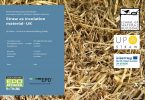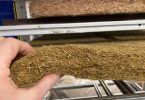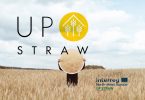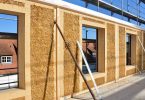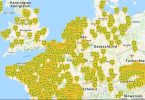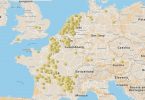
The eco-materials increasingly used in construction are generally valued through the coupling between their mechanical and thermal properties. While thermal properties may be the primary characteristics in the case of insulation panels inserted into structures, the coupling of thermal conductivity and mechanical strength is inseparable in the case of materials used in the structure of the building. In all cases, the thermal conductivity of the material is inversely related to its density once it is in place.
Straw building projects tend to change the role of straw bales from that of a simple insulator to that of a supporting and insulating element.
Mission
The objective of this service is to characterise changes in the thermal conductivity of straw bales according to their state of compaction. The client is the company Bois et Paille. The approach consists of :
- Receiving compacted bales at different densities, determining their density and water content
- Measuring the effective thermal conductivity of each bundle in at least two orthogonal directions
- Understand the relationships between the effective thermal conductivity and the densities of the bundles as a whole.
Author: Eddy FRUCHARD


